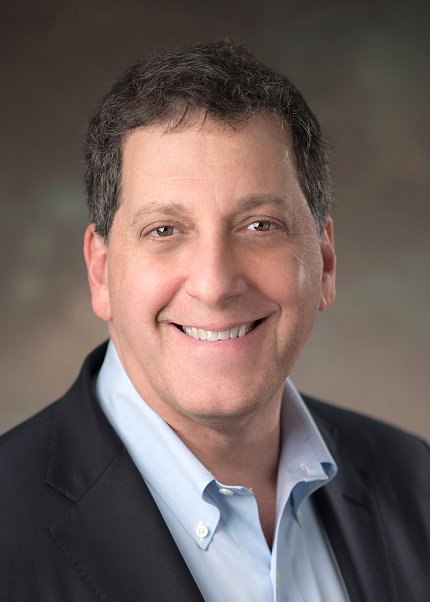‘A Thread to Pull On’
Faster Sequencing, More Patients Boost Autism Research

A philanthropist’s largesse and faster sequencing technology are helping researchers gain footholds in understanding autism spectrum disorder, which affects between 1 and 2 percent of the population.
But complex diseases of brain and behavior such as ASD will not yield soon to simple solutions, said Dr. Matthew State, chair of the department of psychiatry at the University of California, San Francisco, School of Medicine.
ASD is “a tremendously heterogeneous disorder,” he said at a recent NHGRI intramural seminar in Lipsett Amphitheater. “Anyone who comes to us and says that 10 out of 10 autism patients have the same marker for idiopathic disease is [likely misguided].”
Genetic surveys of the cause of ASD began to be successful in the early 2000s, he said, with research groups now converging on roughly the same set of genes during the past decade. Some 65 ASD-associated genes have been identified so far, said State, with scientists having the highest confidence in about 30 of them.
“We expect the final number will be somewhere between 400 and 1,000,” he said.
It has long been known that genes play a major role in ASD, a broad set of disorders of social communication, but State said there are no treatments that are highly effective, particularly for the core social deficits. “The mainstay, first-line treatment is behavioral therapy,” he noted. “But our lack of knowledge about the molecular, cellular and circuit mechanisms in ASD is profoundly limiting.”
Abetting the search for those mechanisms are whole-exome studies of simplex families, those in which there is a single affected child, where both parents and other offspring are normal. The Simons Simplex Collection, a data bank of information on 3,000 ASD families, has given researchers “a thread to pull on,” said State.
New York philanthropist Jim Simons funded the collection, inspired by advances made by the Cold Spring Harbor laboratory of Dr. Michael Wigler in 2007 that were later underscored by State and colleagues and other labs, including Wigler’s, in larger patient cohorts.
“Advances in autism research tend to come in waves, of both technological advances and more participants,” State said.
A 2011 microarray study involving about 1,000 simplex families detected a higher percentage of copy number variations in those with idiopathic autism. De novo mutations were found in both affected and healthy family members, however, and involved both deletions and duplications, State said. Scientists, however, were able to use the observation that these rare mutations hit the same gene or region in those affected to find the specific genetic contributors to ASD.
So far, ASD genes appear to function largely in two domains, chromatin modification and synaptic structure and function, said State.
“For the first 15 years of my two decades in this field, we were wandering in the desert,” he explained. “It’s only in the last 5 years that we’ve really begun to get a glimpse of the Promised Land.”
A practicing child psychiatrist, State said he “cares most about pathophysiology, not just biology.” His goal is to develop new treatments that help families and individuals.
It is known that advanced paternal age is associated with greater risk of ASD, only in part due to gene-disruptive single-nucleotide variants. And girls with ASD have a greater burden of mutations, suggesting that somehow their biology protects them against ASD.
State said that whole-genome sequencing is a popular new tool in ASD studies, but he thinks it is under-powered at present for gene discovery.
“Everyone’s surfin’ now, and we are too,” he said. “But this ain’t gonna be easy.”
The power issue—how many samples are needed to see an unmistakable signal—is a challenge in ASD research. As these samples get much larger, whole genome sequencing will almost certainly play an increasingly important role.
In addition, State predicts that drop-seq, a technology that allows biologists to analyze genome-wide gene expression in thousands of individual cells in a single experiment, “will help us interpret the genes we have found. It will explode our concept of how many cells there really are in the brain.”
He and his colleagues are also pursuing a spatio-temporal approach to the developing brain, to find out when and where ASD genes do their damage. Initial forays taking this approach have pointed to deep-layer cortical glutamatergic neurons in the fetal cortex.
“The BRAIN initiative’s goal of a complete census of brain cells would be very helpful,” he noted.
State concluded by predicting “a new era in the study of developmental neuropsychiatric disorders.” Stay tuned.
